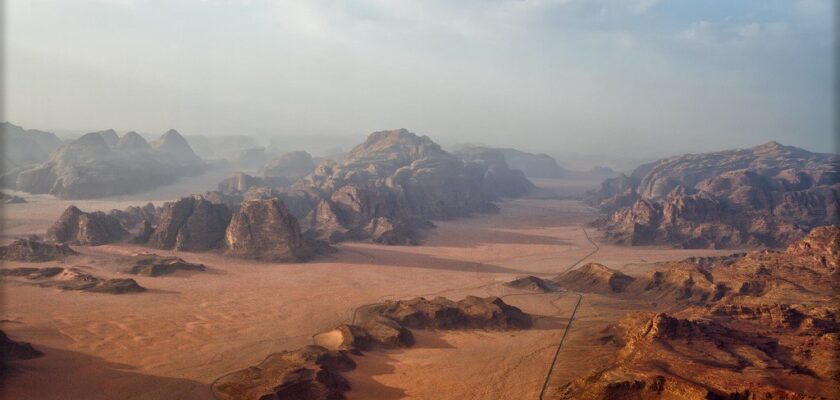Wadi Rum Desert (Moon Valley)
An hour’s drive from Petra or Aqaba and four hours from Amman, on the Desert Highway lies Wadi Rum, a lost world. There lies the highest mountain in Jordan, Jebel Rum, at 1,754 meters. It stands in the center of a stunning desert landscape, which was called beautiful even deprived of sentimentality local tribes. However, the beauty of these places does not prevent them from being harsh – it is not easy to survive here, and it was possible only to persistent Bedouins, who had camels, deep knowledge of finding water and a specific way of life adapted to local conditions.
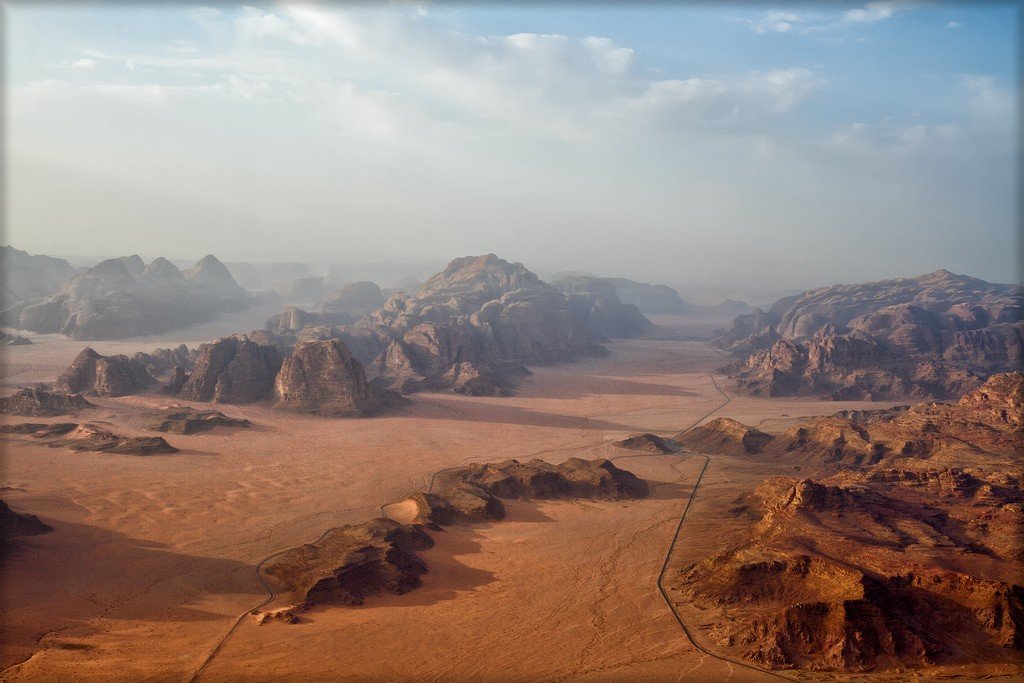
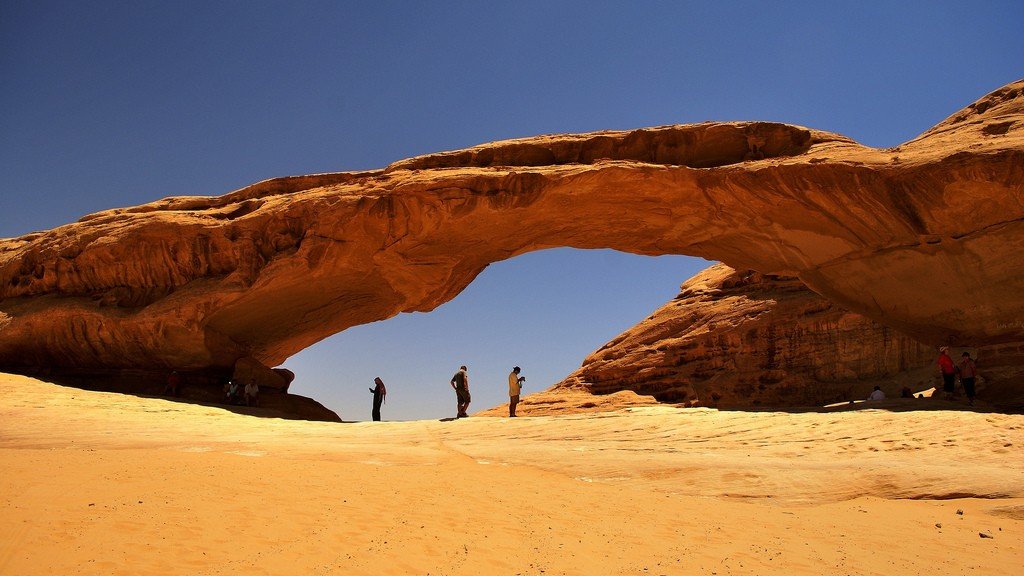
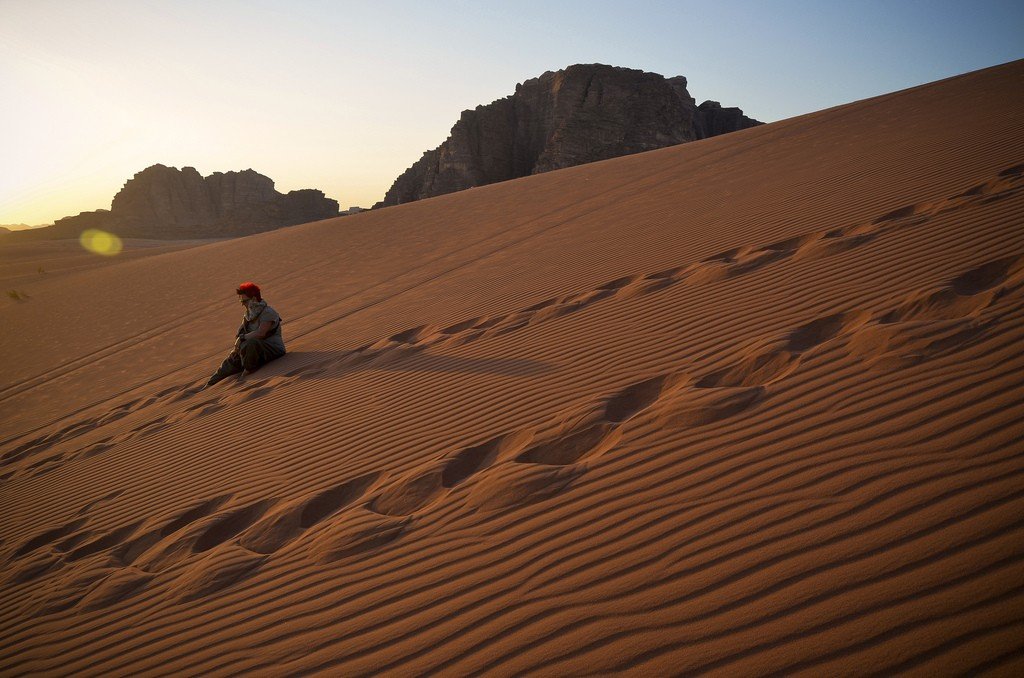
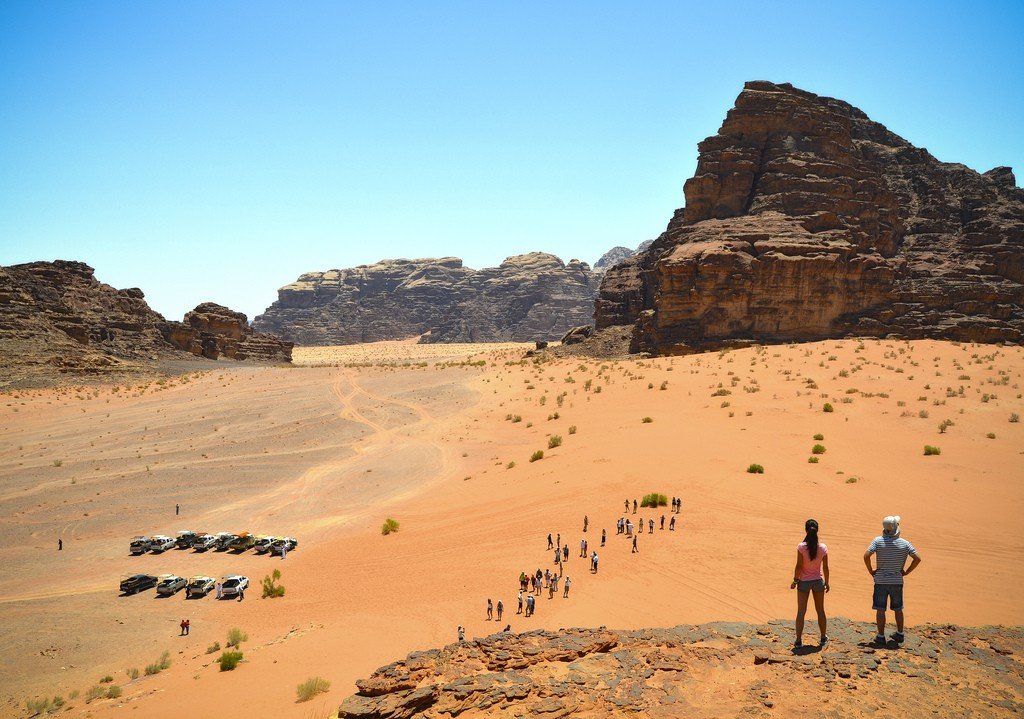
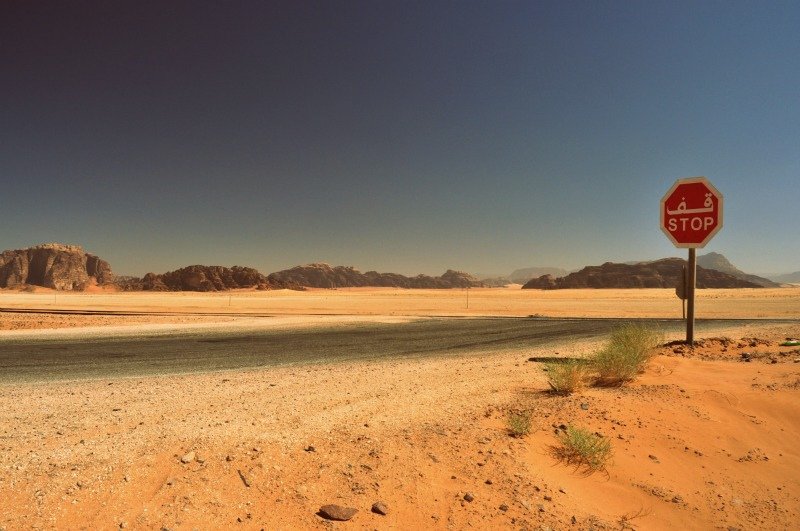
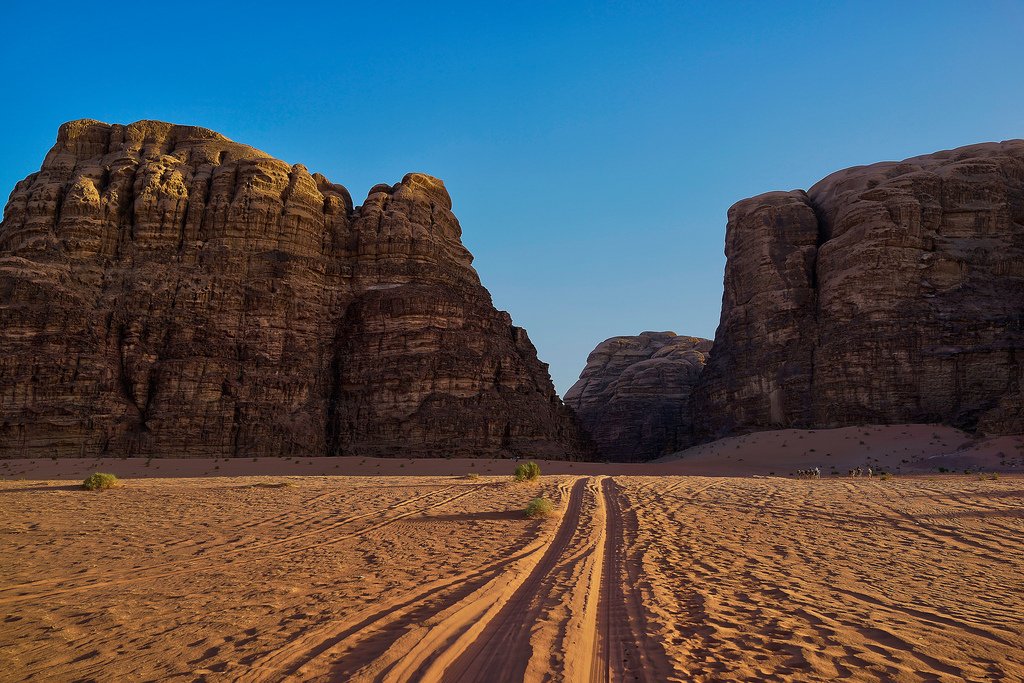
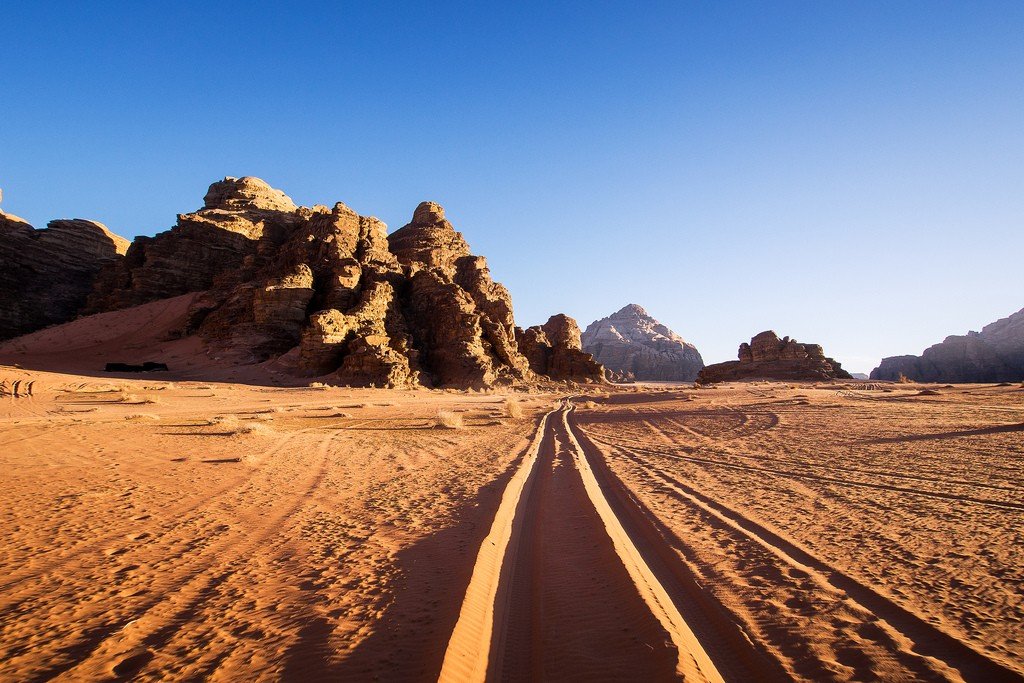
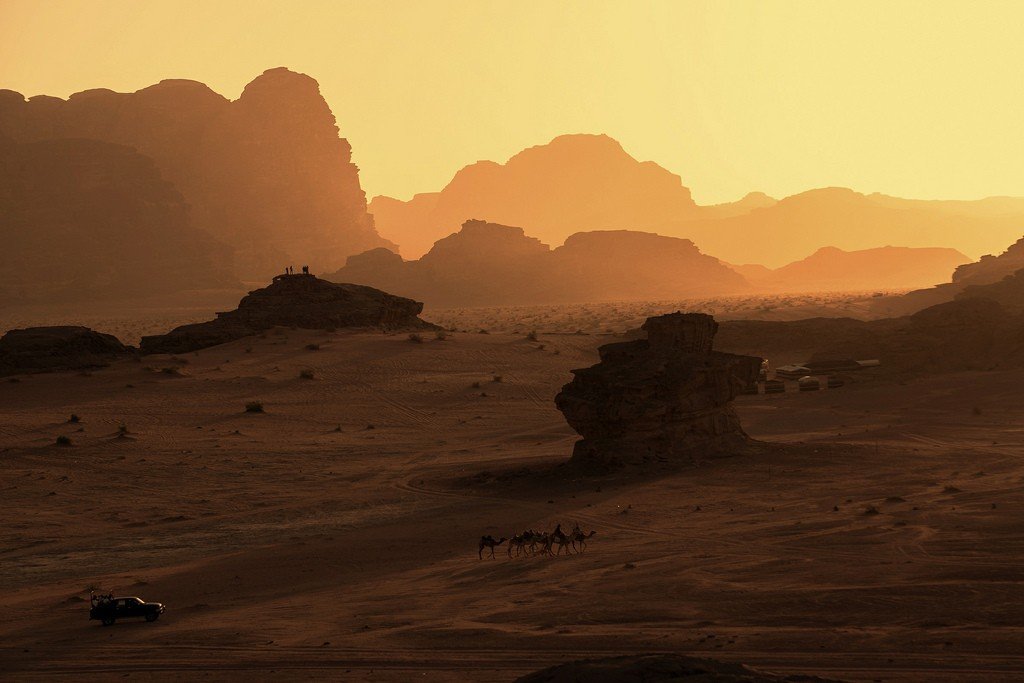
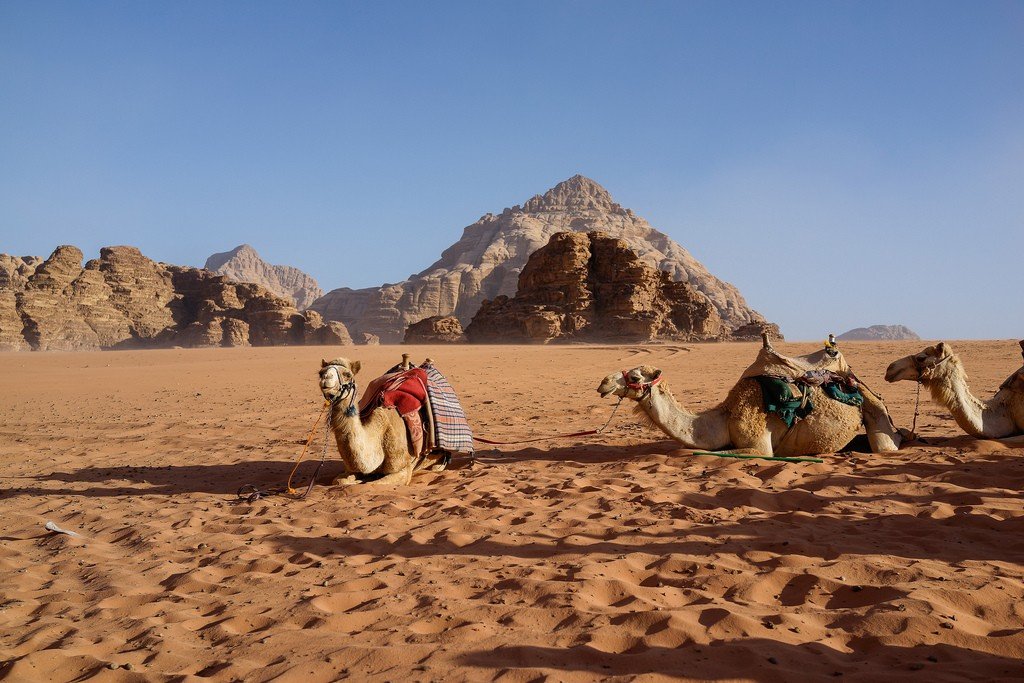
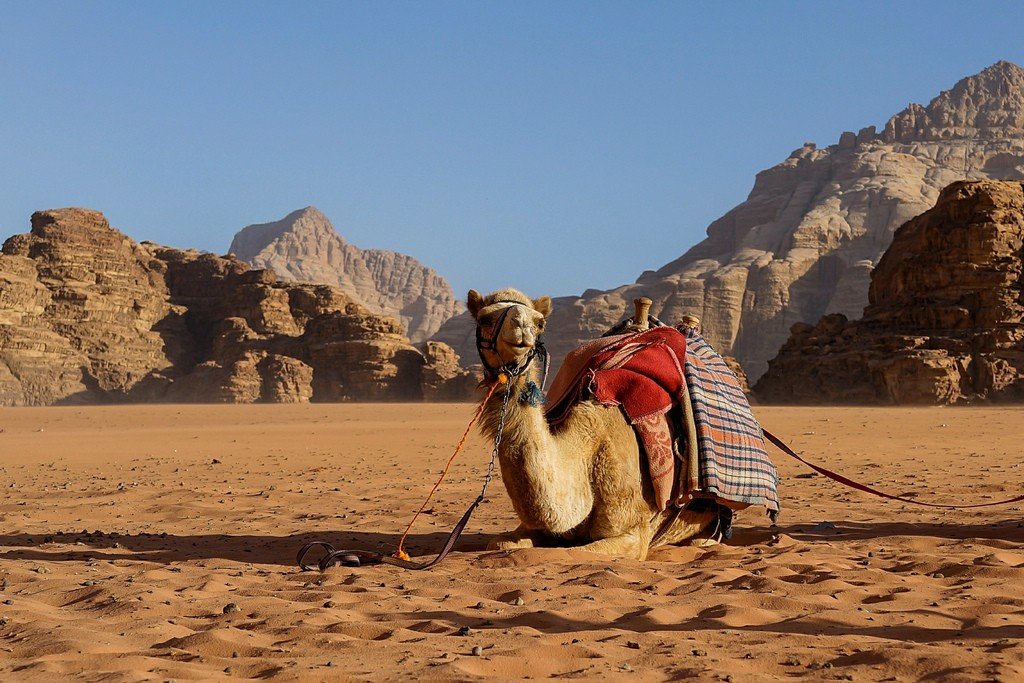
- General information
- Practical tips
- Bourda Bridge- Rock
- Hazadi Canyon
- Lawrence Spring
- The Seven Pillars of Wisdom
- Bedouin “Ships of the Desert”
- Camel Ride
General Information
Today, Wadi Rum is a well-organized tourist attraction that supports the livelihood of the locals. This has its advantages and disadvantages. Thanks to well organized tours, you won’t have to face the unpredictable circumstances that used to trip up independent travelers on their way to Wadi Rum.
Wadi Rum is forever associated with Lawrence of Arabia and his book “Seven Pillars of Wisdom”, in which you can read memorable descriptions of the landscape:
.“To our left stood a long stone wall that curved in a thousand-foot arc toward the middle of the valley. Opposite it, to our right, a second such arc rose in a broken line of red peaks….. The peak on the right seemed higher and sharper in contrast to the other side, where the ridge of mountains straightened into one not so high, but impregnable massif of reddish color…. When we looked more closely, we saw that they were not solid walls of stone, but were separate cliffs, like gigantic buildings, lined up on either side of the street they formed. They were separated from each other by shady alleys fifty feet wide, and the curves and recesses, weathered into the walls over the years and painted with surface growths and cracks, looked like man-made architectural details. Karst voids high up in the precipitous walls were like round windows; others, at the very foot, gaped like doors” (Chapter 62).”
To get an experience comparable to what Lawrence writes about, you must spend at least an evening in Wadi Rum, seeing sunset, night, and day in their entirety. A day trip from Aqaba or Petra will only marginally give you a sense of the charm of the place, so set aside at least a day to visit it when planning your itinerary.
.
Time spent in Wadi Rum is always magical, sunsets and sunrises are especially beautiful here. The valley has a surprisingly wide variety of butterflies and birds. If you lie on your back on the sand and gaze up at the rock above you or just into the sky, the only sounds you will hear are birds chirping and the light sound of wings. At sunset, the valley and surrounding cliffs take on a surreal shape. In the moonlight, they look intimidating.
.Practical tips
You can come here either by SUV or camel by paying 2 dinars per person to enter the Wadi Rum Protected Area without prior arrangement with the tourist center.
.With an SUV, you’ll naturally go farther, reaching places like Burda Rock Bridge in an hour, rather than embarking on an overnight camel expedition. Off-road vehicle routes are tightly controlled to minimize environmental damage, with a team of guards patrolling the 720 km² protected area. Hunting and litter are just two of the many problems. If you own an off-road vehicle, stick to the paved routes. A special permit is required for tenting and rock climbing..Tourist Center. Tel: 03-209-0600. E-mail: rum@nets.com.jo. If you come for a short stay (less than a day), it is enough just to come to the center and use the services of another guide. If you want to stay longer, send an e-mail at least a week in advance; in April, September and October it is better to book accommodation in advance..Burda Rock Bridge
Climbing this natural rock bridge is perhaps the most exciting of Wadi Rum’s attractions. With a guide, you’ll climb the bridge in an hour and descend a little faster. The climb is mostly straightforward, but there are a few surprises. It’s best not to do it in August after noon and barefoot – the rock gets very hot. Dress appropriately – descending the rock in a skirt or dress will be difficult: the hem will prevent you from seeing where to put your foot.
.Hazadi Canyon
This is a narrow mountain gorge about 5 kilometers long. It starts from the village of Ram. The walls are covered with rock inscriptions.
Lawrence Spring
About 1 km south of Ram village is the site where Lawrence, according to legend, bathed during the Arab Revolt. There are also many rock inscriptions in the area.
>“Seven Pillars of Wisdom”
This is the name of the mountain that guards the entrance to Wadi Rum and is shaped like seven pillars. It is located to the left of the tourist center.
Bedouin “Ships of the Desert”
Wadi Rum and the surrounding desert areas are still home to eight major Nomadic tribes. Their total number is 40,000 (up from 220,000 in the 1950s). Many have become semi-Nomadic, leading a sedentary lifestyle. Only some members of the tribe, mostly young men, roam the desert, taking their cattle out to graze. Life in the desert without camels is impossible, so they are taken care of in every possible way. The life span of a camel is about 20 years. They start breeding at 2 years of age, and camel cubs are born every fall.
.
Camel Travel
The camel is the most eco-friendly mode of transportation for desert travel – and, of course, the most traditional. You’re offered everything from a half-hour test ride to a full overnight trip; but either way, the experience will stay with you far longer than the sore muscles you didn’t even know existed.
>Camel riding over the last decade has ceased to be an “exclusive”, exotic offer of travel agencies. Today, the tourist center has firm rates for excursions, taking into account the schedule and complexity of the route. The business is perfectly established, and there is nothing intimidating about it anymore.
.Camel ride to the Alameleh Writings
This is the best of the short camel rides on offer; like all the others, it starts from the village of Ram.
.It is 6 kilometers long and lasts about 2 hours. A leisurely trot will take you to the northern edge of the village (1 km), where the Nabataean Temple stands.
.Nabatean Temple
Italian archaeologists have excavated the ruins of this temple, almost completely buried under a layer of sand. It dates from the 1st century AD, the era of Aretas IV, and was built on the ruins of the temple of the goddess Allat. The Italians also excavated several prehistoric Bedouin dwellings between 1980 and 1986.
Looking from here at the right wall of the Ram Gorge, you will notice a group of five trees, about 800 meters from the temple ruins. This is the source of Ain Shellal.
After dismounting, you can climb up a pile of rocks from the valley floor all the way to the crevice where the spring gushes out of the rock. The water here is excellent: clear and cool even in the height of summer; it is the best spring in Wadi Rum. Continue onward along the narrow section of Wadi Rum, keeping to the right side, skirting the mountains, to the impressive sight of the rock “enfas”.
.Alameleh inscriptions
On this rock are preserved beautiful examples of ancient, prehistoric inscriptions – images of camels and other wild animals. Their authors are believed to be people from the Tamud tribe (now extinct) – it came here from Algeria and Saudi Arabia, north of Medina. This tribe is mentioned as early as in texts from the 8th century BC as pagans conquered by the Nabataeans.
.
From here, the route turns back south; it winds through picturesque sand dunes and winds among the cliffs, leading again to the village of Ram.
.